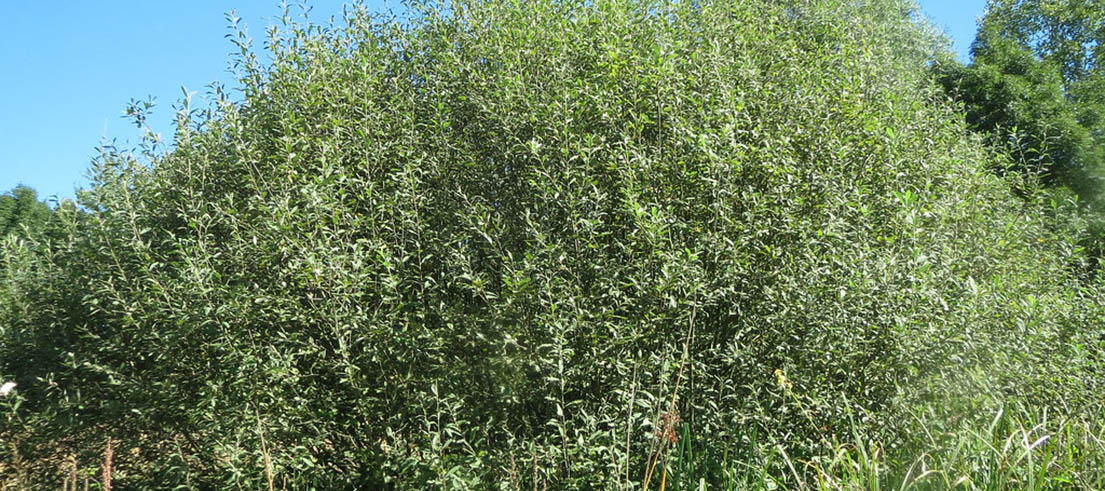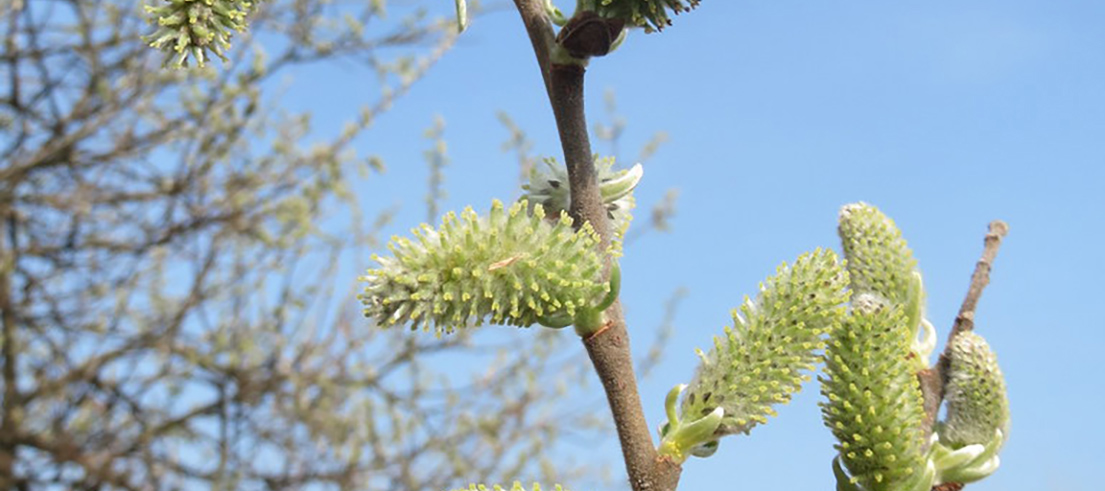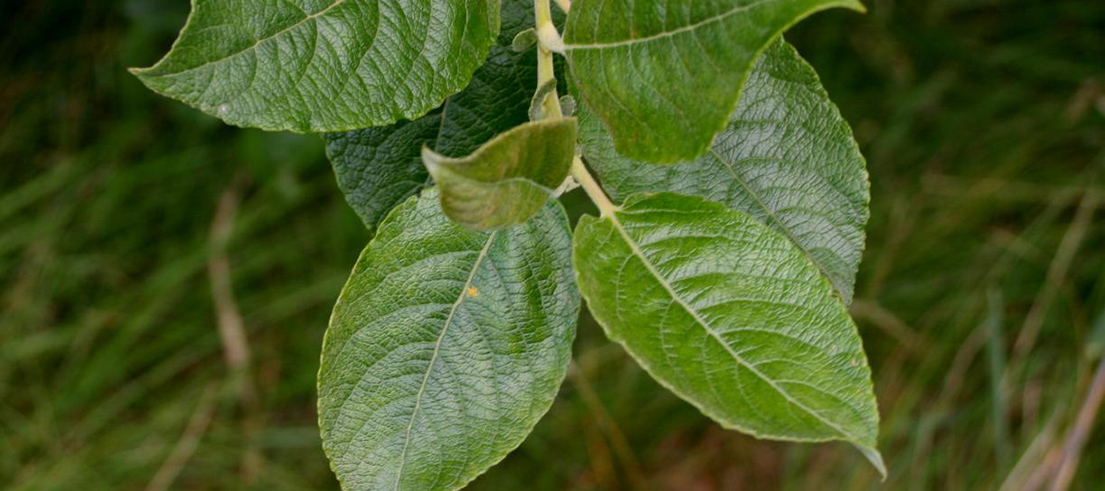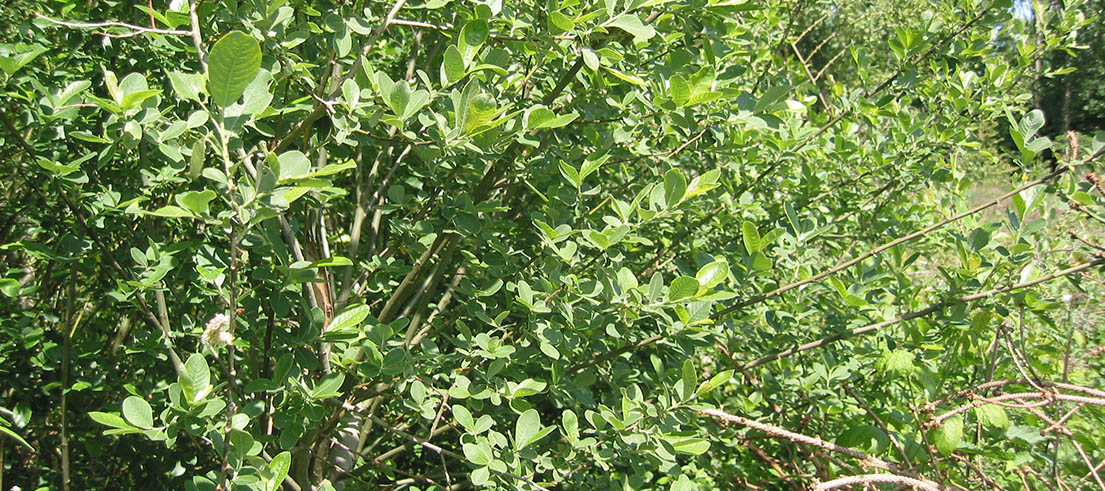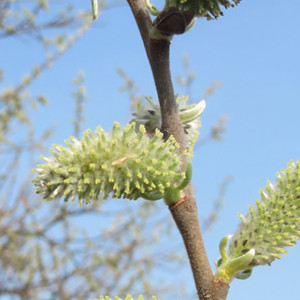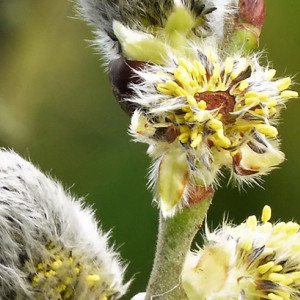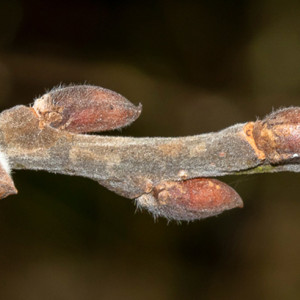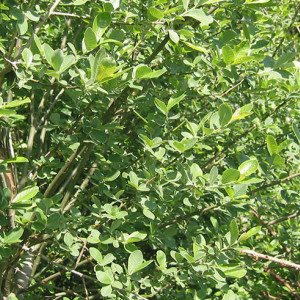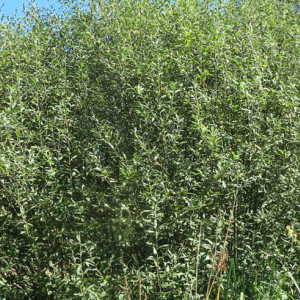Deciduous shrub or small tree around 7m tall with petal-free flowers. Grey willow displaces native species and alters waterways by blocking or flooding.
Description
- Stems are grey/green and hairy or red/dark purple and smooth.
- Leaves are oval-like and narrower at the base, less than 7 x 3.5cm.
- Flower clusters with no petals (catkins) are cylindrical and appear before leaves.
- Seed is wind dispersed. Vegetative spread from stem fragments and suckers, dispersed by water.
- Human-mediated dispersal through deliberate plantings.
- Habitats include wetlands, water bodies, water body margins, swamps, and wet areas behind coastal dunes.
What you need to know
Forms dense stands that compete with and displace native species. Alters hydrology of waterways through blocking, flooding and structural changes. May alter soil decomposition cycles.
Management approach
Grey willow is an unwanted organism regulated under the National Plant Pest Accord.
National Pest Plant Accord (NPPA)
The NPPA prevents the sale, distribution and propagation of specified pest plants within Aotearoa/New Zealand and is administered by the Ministry for Primary Industries (MPI).
Rules
Any species declared a pest, including unwanted organisms, cannot be sold or be in a place where plants are being sold. Pest plants cannot be propagated, bred, multiplied, communicated, released, caused to be released, or otherwise spread.
See the MPI website for more information on the NPPA.
Consider removing these invasive species from your property and consult your local council for appropriate disposal. Consider lower-risk alternatives for your garden, such as native plants.
Control
Site management
Follow up treated areas three times per year. Encourage natural regeneration of native plants or replant treated areas where possible after two to three treatments to establish dense ground cover and minimise reinvasion.
Physical control
Dig or pull small plants out.
Plant parts requiring disposal: all parts.
Contact your local council for appropriate disposal locations.
Chemical control
No qualifications: Cut stump and paste freshly cut base of stems with glyphosate gel or spray freshly cut base with 250ml glyphosate per 1L of water. Cut material must be removed or it will regrow.
Certified handler/experienced agrichemical user: Drill and inject trees with 500ml glyphosate per 1L of water if safe to do so. Drill 18mm holes (tangentially angled downwards) in a spiral up the trunk. For 100mm stems drill two holes. For larger stems drill holes 150mm apart. Foliar spray with 150ml glyphosate per 10L of water and 20ml penetrant.
Caution: When using any herbicide or pesticide please read the label thoroughly to ensure that all instructions and safety requirements are followed.
Biological control
Biological control is currently not available for this species.

